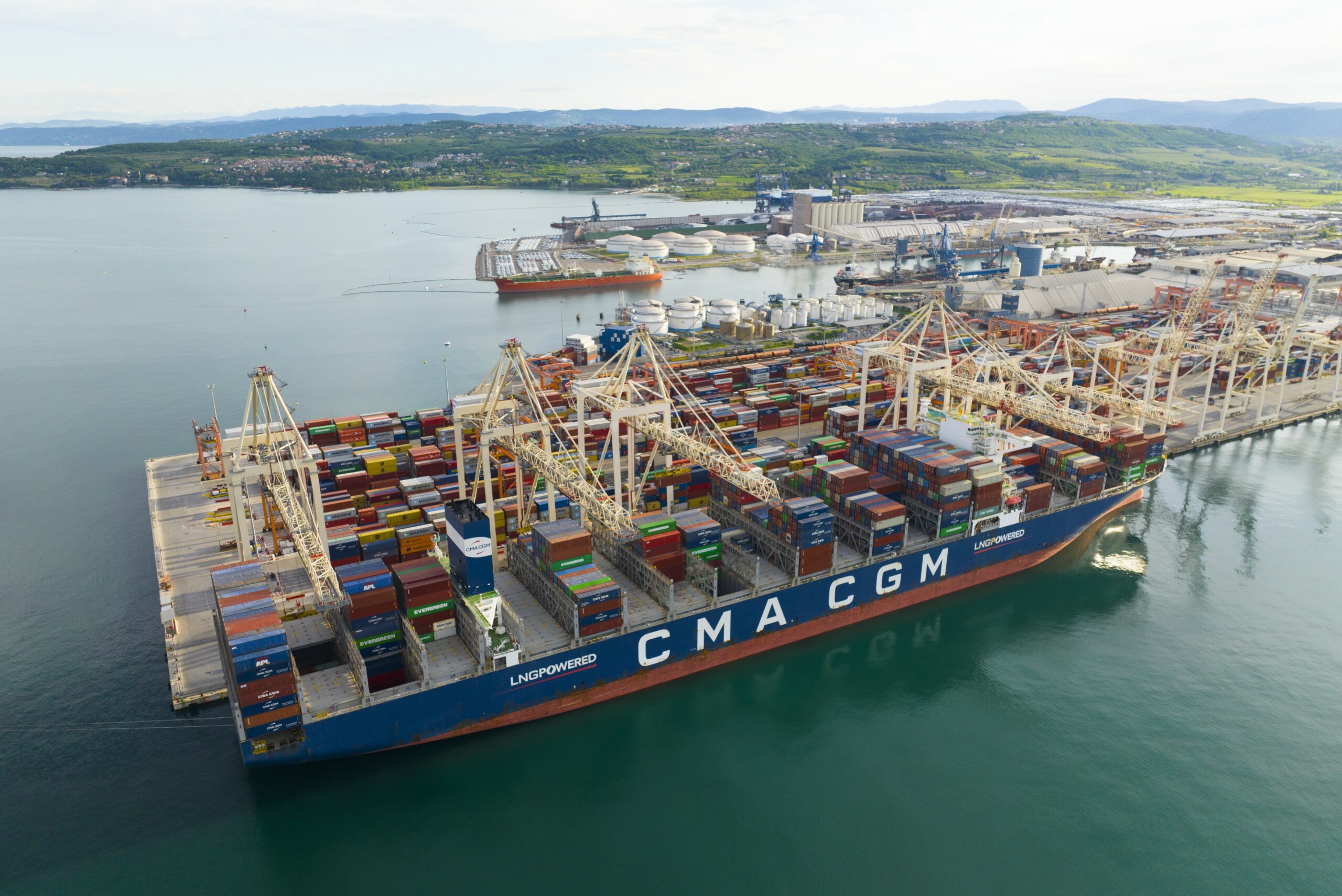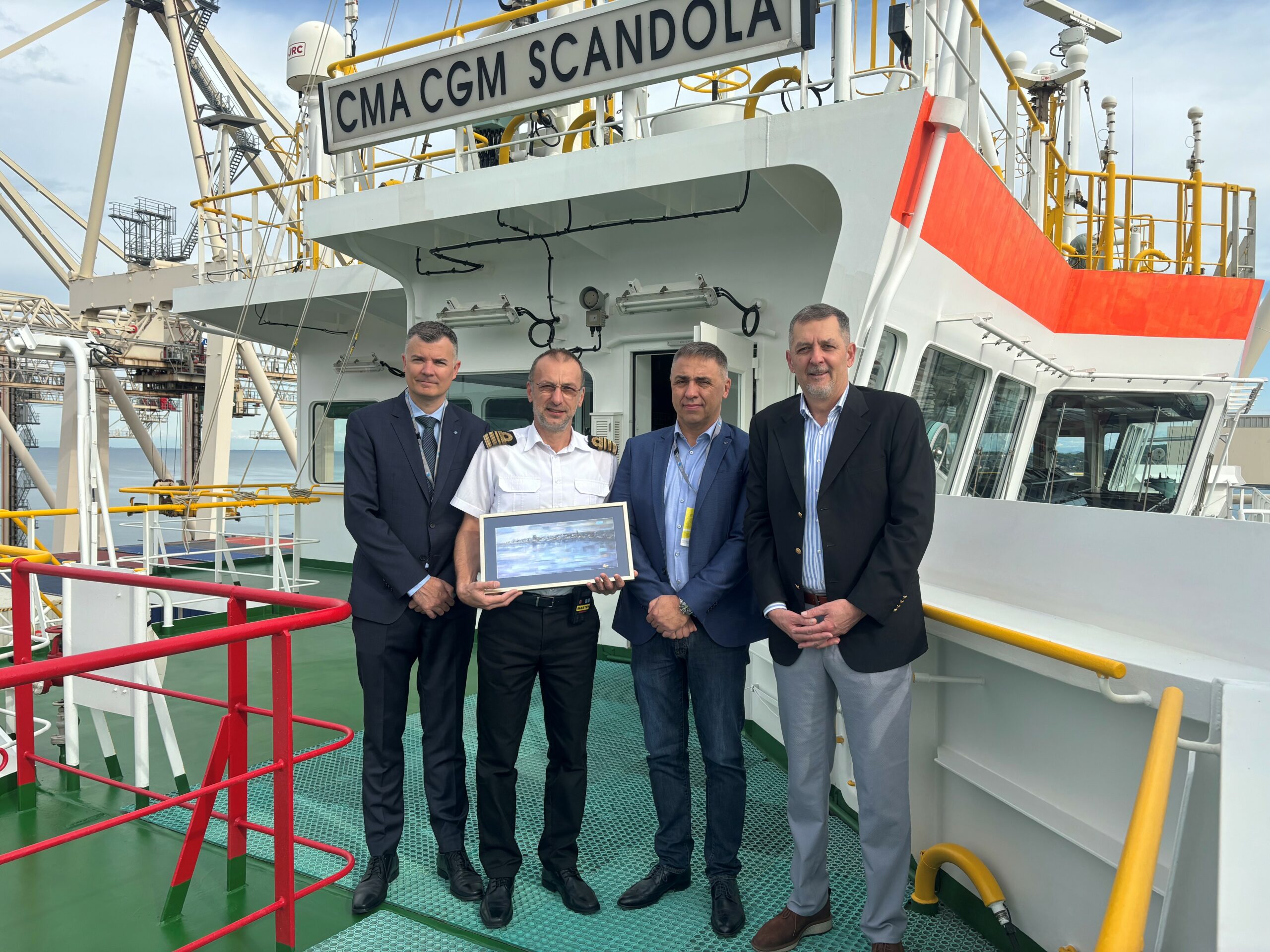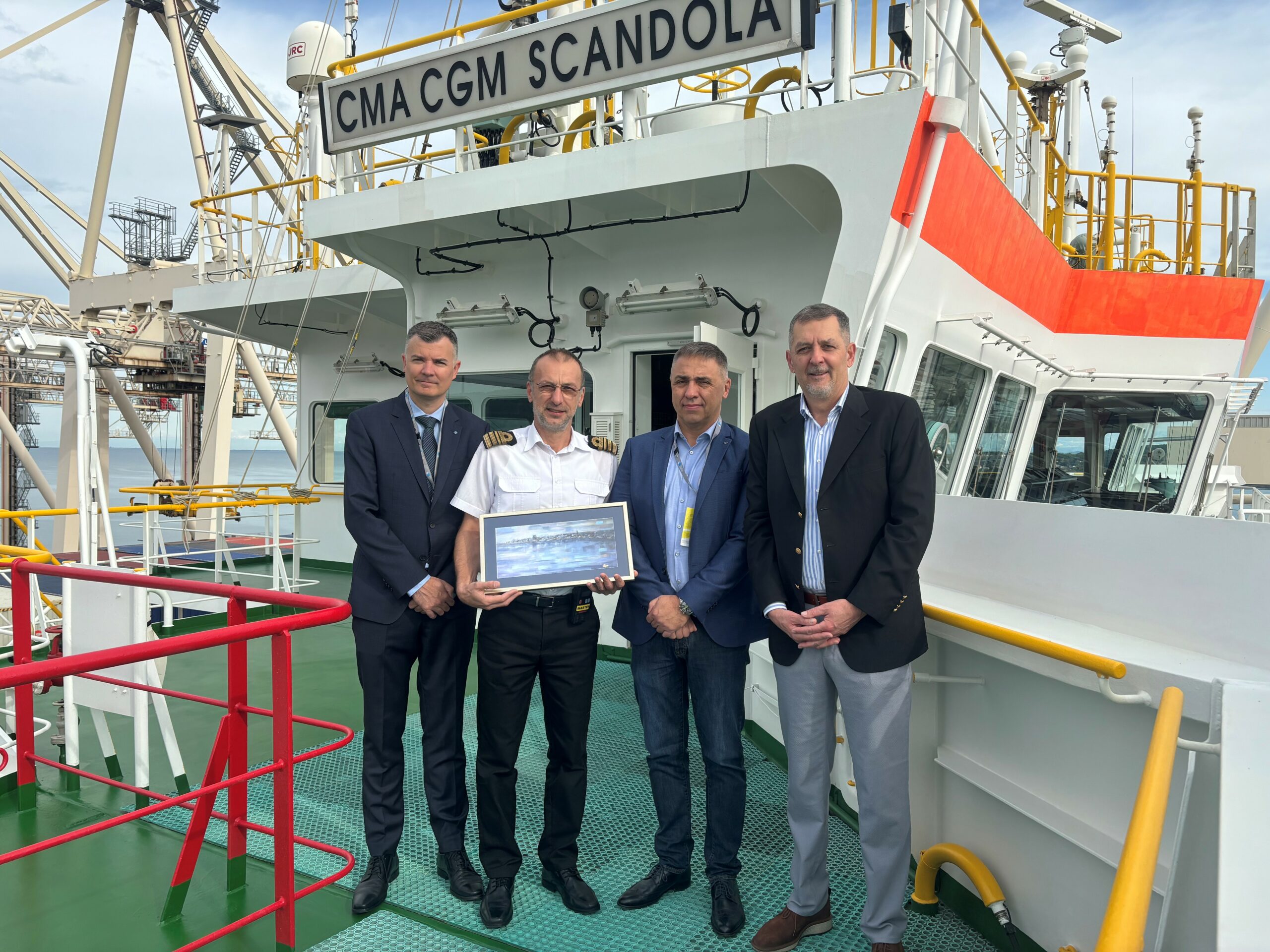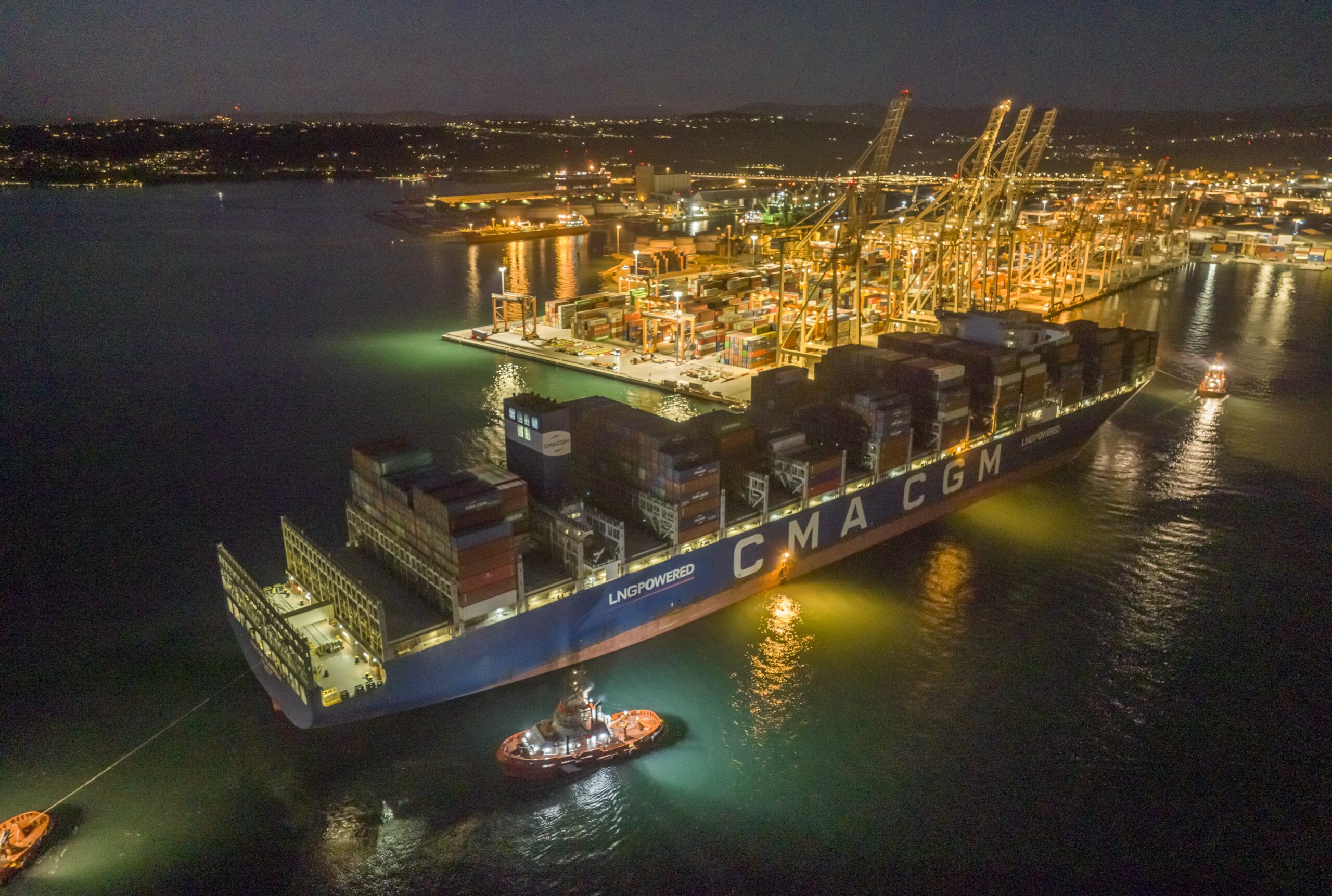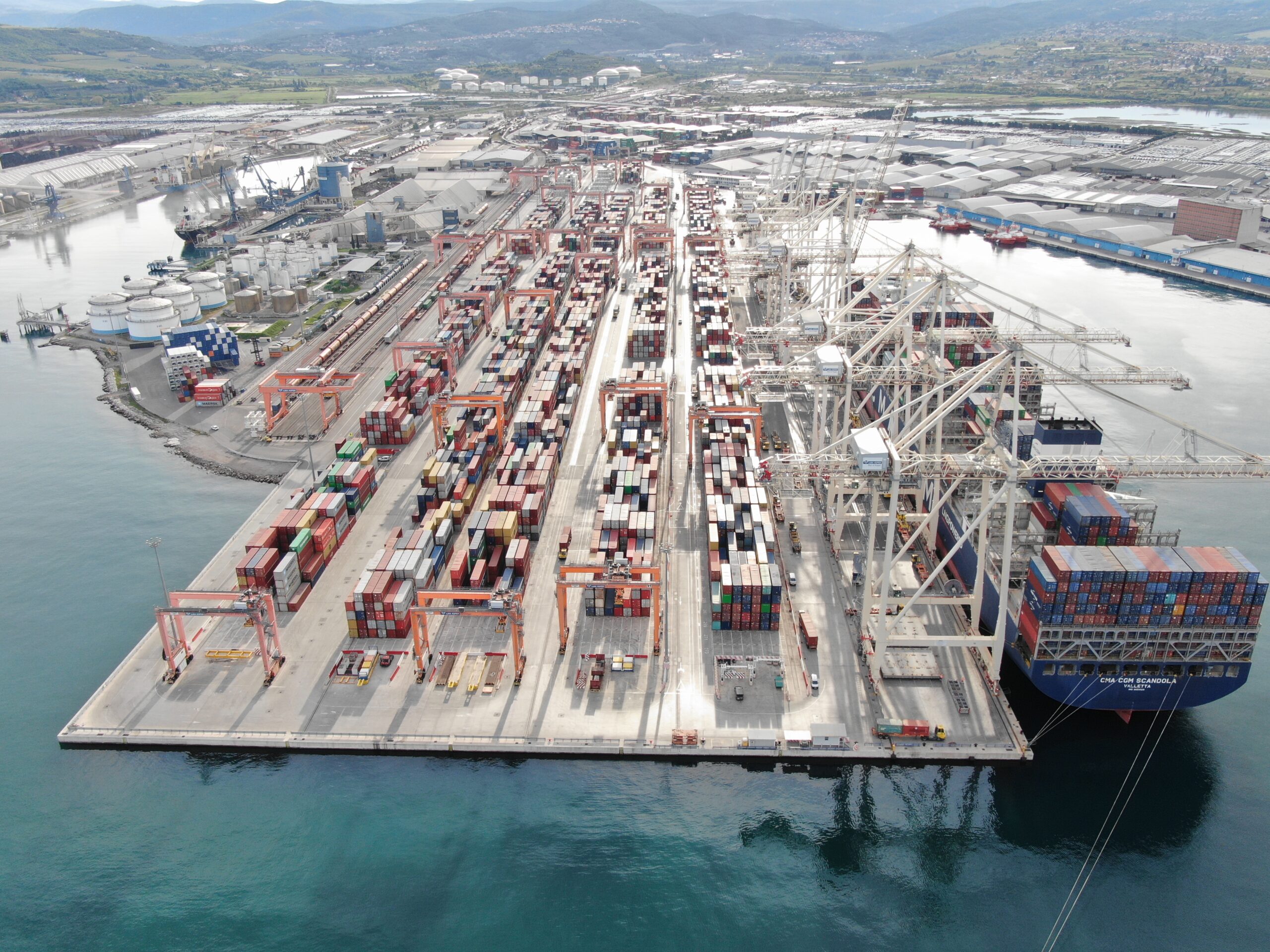The CMA CGM SCANDOLA is one of 35 ships in the French shipowner’s fleet powered by liquefied natural gas (LNG). By 2028, the number of ships powered by decarbonised fuels is expected to increase to 120, reducing CO2 emissions by up to 20% compared to fossil-fuelled ships.
The green business decision is part of the shipowner’s commitment to achieve net zero emissions or climate neutrality by 2050, and to reduce emissions from the entire logistics group substantially in the years before that. “The arrival of the CMA CGM SCANDOLA demonstrates our commitment to reducing our carbon footprint and to adopting more environmentally friendly forms of transport and logistics,” said Bine Štancar, General Manager of the CMA CGM Adriatic Cluster.
The use of LNG as a propellant in maritime transport is currently considered one of the most promising and efficient alternative energy sources, helping to reduce the negative environmental impact of maritime transport and preserve air quality. The use of LNG fuel is expected to achieve up to 99% less sulphur oxide (SOx) emissions, 91% less PM emissions and 92% less nitrogen oxide (NOx) emissions both during the voyage and as local emissions while the ship is moored in port.
“We are pleased that CMA CGM’s objectives are in line with the sustainable development strategy of the Port of Koper, which is based on maintaining environmental sustainability standards, reducing the Company’s carbon footprint and increasing energy self-sufficiency through renewable energy sources. In addition, for many years now, we at the Port of Koper have been working to involve shipowners in activities to reduce environmental burdens. This is why we have recently introduced the Environmental Ship Index (ESI) scheme, which is also used by other ports to incentivise and reward cleaner ships,” said Gregor Belič, Member of the Management Board, adding that ships that meet several environmental criteria to reduce their environmental impact are already able to pay lower port charges. This is one of the key comparative advantages of the ports included in the ESI scheme.
Efforts to achieve the objectives of the energy transition of the Port of Koper are increasingly being implemented mainly through the provision of infrastructure for the generation of electricity from renewable sources. Investments in photovoltaic power plants on the roofs of warehouses are currently being finalised and are expected to be connected to the internal grid by this summer.
